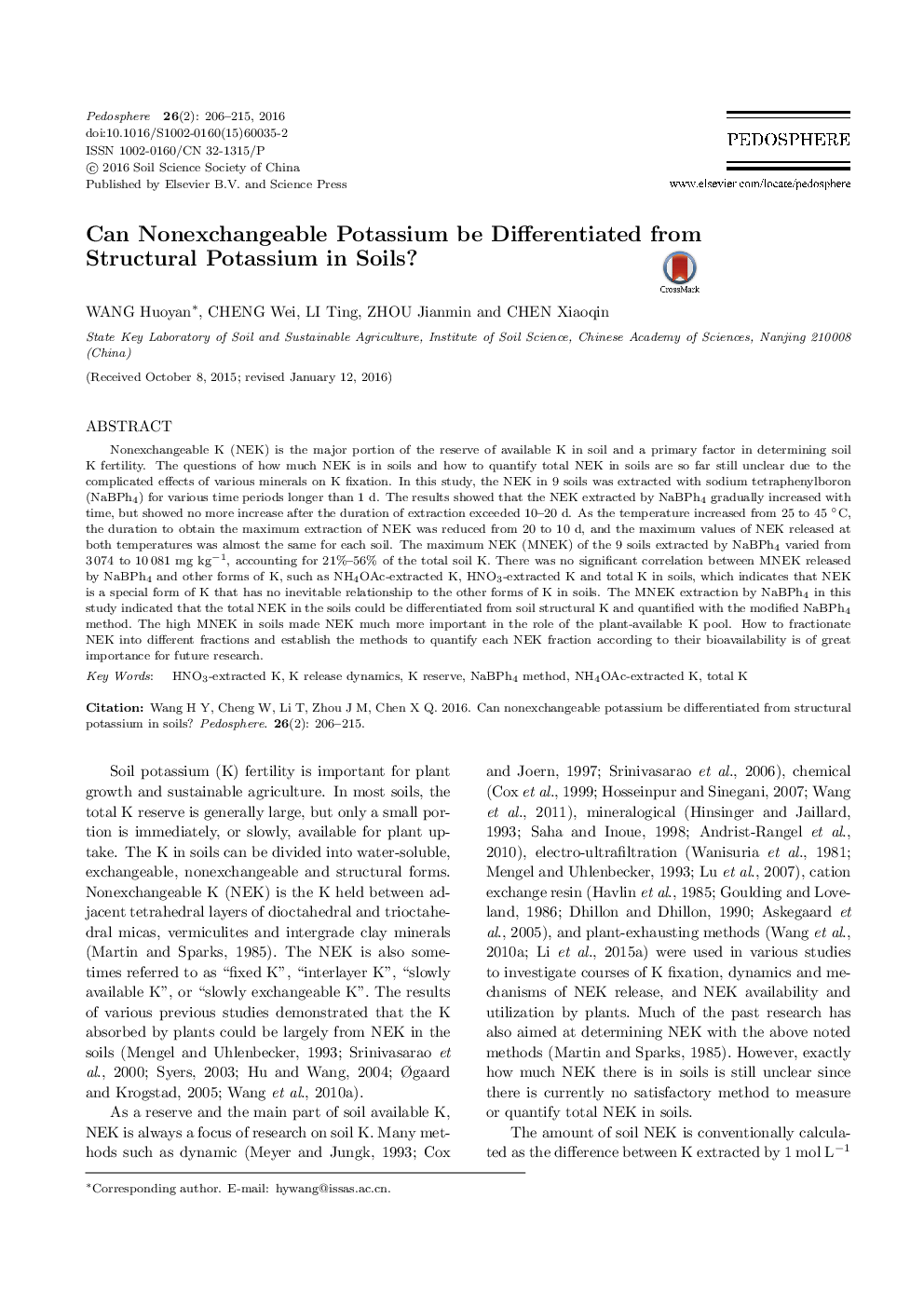| Article ID | Journal | Published Year | Pages | File Type |
|---|---|---|---|---|
| 4581127 | Pedosphere | 2016 | 10 Pages |
Nonexchangeable K (NEK) is the major portion of the reserve of available K in soil and a primary factor in determining soil K fertility. The questions of how much NEK is in soils and how to quantify total NEK in soils are so far still unclear due to the complicated effects of various minerals on K fixation. In this study, the NEK in 9 soils was extracted with sodium tetraphenylboron (NaBPh4) for various time periods longer than 1 d. The results showed that the NEK extracted by NaBPh4 gradually increased with time, but showed no more increase after the duration of extraction exceeded 10–20 d. As the temperature increased from 25 to 45 °C, the duration to obtain the maximum extraction of NEK was reduced from 20 to 10 d, and the maximum values of NEK released at both temperatures was almost the same for each soil. The maximum NEK (MNEK) of the 9 soils extracted by NaBPh4 varied from 3 074 to 10 081 mg kg−1, accounting for 21%–56% of the total soil K. There was no significant correlation between MNEK released by NaBPh4 and other forms of K, such as NH4OAc-extracted K, HNO3-extracted K and total K in soils, which indicates that NEK is a special form of K that has no inevitable relationship to the other forms of K in soils. The MNEK extraction by NaBPh4 in this study indicated that the total NEK in the soils could be differentiated from soil structural K and quantified with the modified NaBPh4 method. The high MNEK in soils made NEK much more important in the role of the plant-available K pool. How to fractionate NEK into different fractions and establish the methods to quantify each NEK fraction according to their bioavailability is of great importance for future research.
